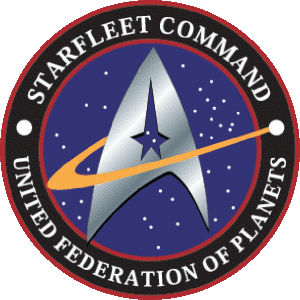

Voyager's maximum speed at impulse was stated in the "Timeless" to be 0.8 c, while "Fair Haven" suggests speeds of less than 200 000 km/s. Since "Fair Haven" is almost entire season after the "Timeless", that discrepancy can be explained by possible damage to the impulse drive and maintenance problems due to ship being trapped in Delta Quadrant; on the other hand, more likely explanation was lack of mass lightening, since warp drive was disabled.
We also have this dialogue from TNG:
JELLICO: Been awhile since I flew one of these. You're a pilot yourself, aren't you Geordi?
LAFORGE: Yes, sir.
JELLICO: I began my career as a shuttle pilot, on the Jovian run. Jupiter to Saturn and back once a day, every day.
LAFORGE: Is that right? I was on that run myself for a while.
JELLICO: Then you must've done Titan's Turn.
LAFORGE: Oh, yeah. You set a course directly for Titan, hold it until you're just brushing the atmosphere, throw the helm hard over and whip around the moon at point seven c.
JELLICO: And pray like hell nobody saw you.
LAFORGE: You know, this trip into the nebula's going to need someone who can do Titan's Turn in their sleep. These mines need to be laid within two kilometres of the Cardassian ships. But the particle flux from the nebula will blind all the sensors except for this proximity detector. You're going to need one heck of a pilot to pull that off.
JELLICO: Is that you?
LAFORGE: I could do it, but truthfully, the man you want is Commander Riker. He's the best there is.
So, shuttle can achieve speeds of at least 0.7c; also, for Titan manouver as descibed, some sort of time-dilation technology would have to be in play; or simply turning off warp bubble.
Also, there is an issue of why Starfleet ships don't use joystick on regular basis. However, some manouvers might have as well being series of pre-programmed turns - which would mean that you can perform quite complex manouvers without joystick, by simply entering numbers for simple manouvers in wished order so that you construct one complex manouver from series of simpler turns. Joystick, meanwhile, allows even for turns that have not been preprogrammed; but that leaves both keyboard and joystick with ability to be used for easy execution of complex manouvers.
(Incidentally, it also can explain short combat ranges - ship at full impulse can close from maximum to point-blank range in less than a second. However, as seen in TNG "The Wounded", combat speeds are often significantly less than that, althought still high). Within 2 seconds, "Phoenix" crosses distance of 32 600 kilometers; thus, combat speeds are around 16 300 kilometers per second.
As for acceleration, refit Enterprise in ST:TMP went from Eart to Jupiter in 1.8 hours.
Minimum distance between Earth and Jupiter is 588 million kilometers, according to this page. That gives us average speed of 326 666 667 kilometers per hour. Maximum speed should be (at Jupiter) 653 333 333 kilometers per hour. That gives us acceleration of exactly 362 962 963 km/h^2, or 28 006.4 m/s^2 (2851.98 G's).
NOTE: And yes, I know that there is no "maximum speed" in space, other than speed of light, or whatever speed that acceleration becomes unmeasurable, since to accelerate from 10 000 km/s to 20 000 km/s you need less energy than to accelerate from 20 000 km/s to 30 000 km/s in same timeframe.
Also, in "Relics", Jenolan closes 500 000 km within few seconds (up to 15 s est, based on rate at witch hatch was closing). That is 33 million meters per second, for acceleration of 4 444 444 m/s^2 minimum.